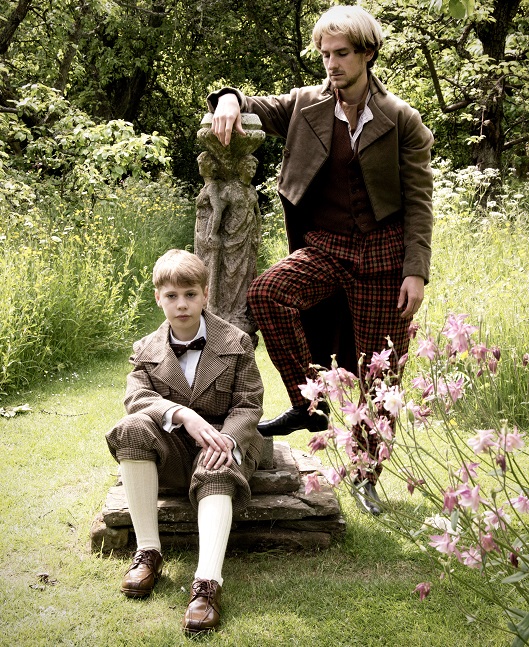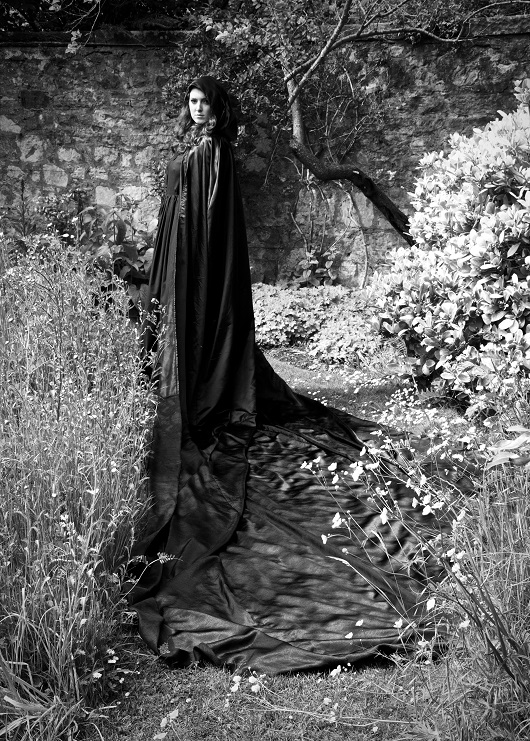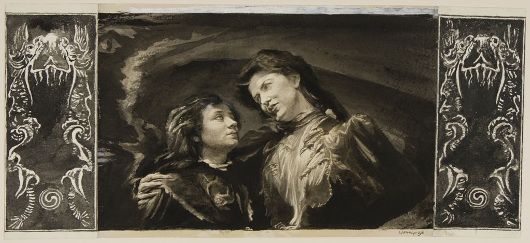Ghosts within us

The University of St Andrews’ opera company, Byre Opera, will bring Benjamin Britten’s ghostly masterpiece The Turn of the Screw to stages across Scotland and the North of England as part of a summer tour beginning on 22 June.
Dr Emma Sutton from the University’s School of English explores what makes this chilling tale so unsettling and so popular, more than a century on.
Emma’s principal research interest is the relationship between literature and music in the late nineteenth and early twentieth centuries, and she has written on music’s role in the works of Henry James.
“The Turn of the Screw is probably Henry James’ best known and most frequently adapted work. It has catalysed not only Britten’s opera, but also ballets, film, stage and TV adaptations, a prequel thriller (The Nightcomers) starring Marlon Brando, and numerous illustrations – from those by Americans John La Farge and Eric Pape that accompanied its print debut to Polish surrealist Rafal Olbinski’s recent opera poster.
“The Turn of the Screw was published in 1898 in the mass-market American magazine Collier’s Weekly, intended as a money-spinner for the American author after five years of unsuccessful writing for the stage.
“James repeatedly referred to the tale as a ‘pot-boiler’, a calculated attempt to cater to popular taste for the shocking, thrilling and lurid. It was, he claimed, ‘a very mechanical matter, I honestly think – an inferior, merely pictorial, subject’.
“We can take these self-deprecations with a pinch of salt: this is a masterpiece of controlled and enigmatic writing that has divided opinion since publication.
“The central story is claustrophobic – limited to a single setting, a handful of characters and with little dialogue – but the first-person narrator and labyrinthine structure create a domino effect, evoking further uncertainties and menace.”
What sort of work is this, then?
“The difficulty of classifying it hints at some of the reasons for its prolonged and diverse afterlife. It isn’t even straightforward to call it a ghost story, a term James himself used (among alternatives including ‘fairy tale’, a ‘bogey tale’ and a ‘tale of terror’).
“Categorising it as a ghost story largely depends on the degree to which we accept – as the governess-narrator does within the book and indeed James himself did – that it includes ghosts.
“This fundamental point is by no means unanimously accepted. To some readers, the horror lies in the fact that the menacing dead servants may be projections of the governess’ mind, externalising her intense, exploitive, relationships with the two children. The work may be a psychological thriller, a study of mania, rather than a ghost story.
“Whichever side we take, James’ tale is unsettling because of its insinuations, the way in which it provokes us as readers to imagine all kinds of horrors yet declines to spell these out.
“In his Preface, James observed that his aim had been to ‘make [the reader] think the evil, make him think it for himself’ – as Virginia Woolf put it, James’ ghosts are chilling because they ‘have their origin within us’. Further, James claimed that the tale’s success depended on the threat rather than the realisation of evil.
“His comments start to explain the enduring fascination with this tale: the nature of its evil reflects the fears of each generation’s readers and listeners, and the evil is constantly anticipated, looming, rather than safely concluded within the tale.
“Tale and opera resonate within us long after the book is closed and the last notes fade.”

The Byre Opera cast includes current students and recent graduates from the University of St Andrews, many of whom are recipients of music scholarships at the University’s Music Centre.
Dr Michael Downes, Director of Music at the University of St Andrews, explains: “We are concluding our sequence of Benjamin Britten’s three chamber operas with The Turn of the Screw. Spine-tingling ghost stories have an enduring appeal and Byre Opera’s performance will be a truly chilling tale for a summer’s evening.
“The cast of current students and recent graduates give a gripping performance and are testament to the talent and dedication of University students who participate in a wide range of opportunities at the Music Centre all year round. I’m very pleased to be bringing Byre Opera to new audiences during our summer tour.”
This production of The Turn of the Screw will make use of special effects on stage to reveal malevolent ghosts and the set design will include taxidermy and old and unused toys to set the tone of the gothic production.
Tania Holland Williams, a singer, opera director and arts producer who has previously worked with the Royal Opera House, Royal Academy and British Council, will direct The Turn of the Screw, returning to St Andrews after directing Byre Opera’s successful 2014 production of Britten’s Albert Herring.
Looking forward to opening night, Tania adds: “There are so many ways of interpreting The Turn of the Screw and it is a fabulous ghost story. I am absolutely delighted to be exploring the subtleties of the work with students from the University of St Andrews, who apply such a rigour of intellect and interrogation to their performance work.”

The Child Magnetized by the Nurse, for The Turn of the Screw, by John La Farge
Harvard Art Museums/Fogg Museum, Gift of Grenville L. Winthrop, Class of 1886.
Book tickets online
The Byre Theatre 22 to 24 June
Macrobert Arts Centre 28 June
The Maltings Theatre 8 July
Illustration courtesy of the Imaging Department © President and Fellows of Harvard College”
Category University news